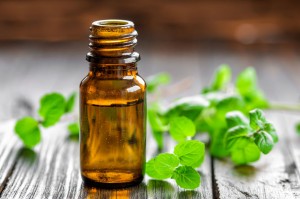 Aromatherapy is an ancient art dating back to the beginning of recorded history. However, the invention of the distillation process in the 11th century created a resurgence of interest, and many practitioners added this modality to the array of treatments available at the time.
Aromatherapy is an ancient art dating back to the beginning of recorded history. However, the invention of the distillation process in the 11th century created a resurgence of interest, and many practitioners added this modality to the array of treatments available at the time.
Due to the non-invasive nature of the therapy it became the most often preferred method of treatment.
Then… and Now
Early in the 1900’s a popular book was published in France that became “the bible” of Aromatherapy and treatment: Aromathérapie: Les Huiles Essentielles, Hormones Végétales by Rene Maurice Gattefosse.
As a chemist, his book was responsible for again increasing the popularity of this treatment as a healing modality.
During WWII it was a French surgeon that pioneered its’ use as a disinfectant and to treat wounds.
It is not surprising that France has played a key role in promoting aromatherapy, especially when you consider that it is also known as the inventor of world class fragrances. After all, distilled essential oils are key ingredients in fine French perfumes.
Aromatherapy as healing modality
Aromatherapy is an alternative medicine modality that uses plant derivatives – their essential oils – distilled from different plants to make a concentrated solution for treatment of a number of psychological and physical illnesses.
Different fragrances have been known to have mood altering properties that can have a positive effect on cognition and physiological processes ranging from treating anxiety and balancing hormones to encouraging sleep.
And topical applications are used as well to treat burns and skin rashes, for example.
The method of delivery is typically through:
- topical application
- massage
- inhalation (air diffusion)
- water immersion
Aromatherapy’s detractors have suggested that there is little clinical evidence of the efficacy of essential oils in the treatment of illnesses.
However, at the same time there is an abundance of evidence suggesting caution be used because the oils are so powerful. Studies have shown, for example, that lavender oil mimics estrogen so caution is advised in its’ use especially when treating men. And wintergreen can interact with anti coagulant drugs.
Some essential oils and their uses
Essential oils can be powerful allies in the treatment of disease. Below is a partial list of essential oils used to treat common illnesses.
Grapefruit Oil
Uses: Cellulitis, dull skin, toxin build-up, water retention, and weight loss.
Peru Balsam Oil
Uses: Bronchitis, chapped skin, colds, coughing, eczema, flu, poor circulation, rashes, sensitive skin, stress.
Rosemary Oil
Uses: Aching muscles, arthritis, dandruff, dull skin, exhaustion, gout, hair care, muscle cramping, neuralgia, poor circulation, rheumatism.
Eucalyptus Oil
Uses: Arthritis, bronchitis, catarrh, cold sores, colds, coughing, fever, flu, poor circulation, and sinusitis.
Rose Oil
Uses: Depression, eczema, frigidity, mature skin, menopause, stress.
Lavender Oil
Uses: Acne, allergies, anxiety, asthma, athlete’s foot, bruises, burns, chicken pox, colic, cuts, cystitis, depression, dermatitis, dysmenorrhea, earache, flatulence, headache, hypertension, insect bites, insect repellant, itching, labor pains, migraine, oily skin, rheumatism, scabies, scars, sores, sprains, strains, stress, stretch marks, vertigo, whooping cough.
Finally…
It is important to keep in mind that anyone seeking treatment should only consult a certified professional who understands the benefits and possible side effects of using essential oils.